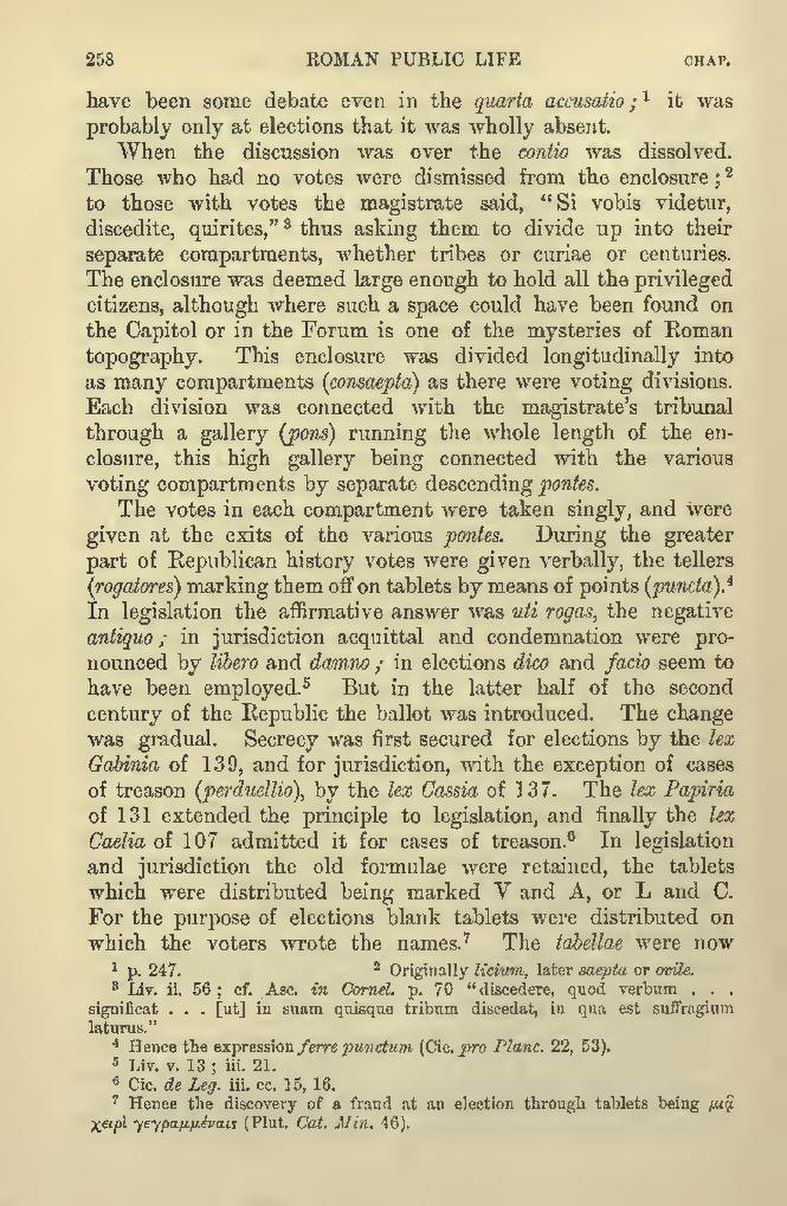have been some debate even in the quarta accusatio;[1] it was probably only at elections that it was wholly absent.
When the discussion was over the contio was dissolved. Those who had no votes were dismissed from the enclosure;[2] to those with votes the magistrate said, "Si vobis videtur, discedite, quirites,"[3] thus asking them to divide up into their separate compartments, whether tribes or curiae or centuries. The enclosure was deemed large enough to hold all the privileged citizens, although where such a space could have been found on the Capitol or in the Forum is one of the mysteries of Roman topography. This enclosure was divided longitudinally into as many compartments (consaepta) as there were voting divisions. Each division was connected with the magistrate's tribunal through a gallery (pons) running the whole length of the enclosure, this high gallery being connected with the various voting compartments by separate descending pontes.
The votes in each compartment were taken singly, and were given at the exits of the various pontes. During the greater part of Republican history votes were given verbally, the tellers (rogatores) marking them off on tablets by means of points (puncta).[4] In legislation the affirmative answer was uti rogas, the negative antiquo; in jurisdiction acquittal and condemnation were pronounced by libero and damno; in elections dico and facio seem to have been employed.[5] But in the latter half of the second century of the Republic the ballot was introduced. The change was gradual. Secrecy was first secured for elections by the lex Gabinia of 139, and for jurisdiction, with the exception of cases of treason (perduellio), by the lex Cassia of 137. The lex Papiria of 131 extended the principle to legislation, and finally the lex Caelia of 107 admitted it for cases of treason.[6] In legislation and jurisdiction the old formulae were retained, the tablets which were distributed being marked V and A, or L and C. For the purpose of elections blank tablets were distributed on which the voters wrote the names.[7] The tabellae were nowin suam quisque tribum discedat, in qua est suffragium laturus."](Plut. Cat. Min. 46).]
- ↑ p. 247.
- ↑ Originally licium, later saepta or ovile.
- ↑ Liv. ii. 56; cf. Asc. in Cornel. p. 70 "discedere, quod verbum . . . significat . . . [ut
- ↑ Hence the expression ferre punctum (Cic. pro Planc. 22, 53).
- ↑ Liv. v. 13; iii. 21.
- ↑ Cic. de Leg. iii. cc. 15, 16.
- ↑ Hence the discovery of a fraud at an election through tablets being [Greek: mia cheiri gegrammenais
